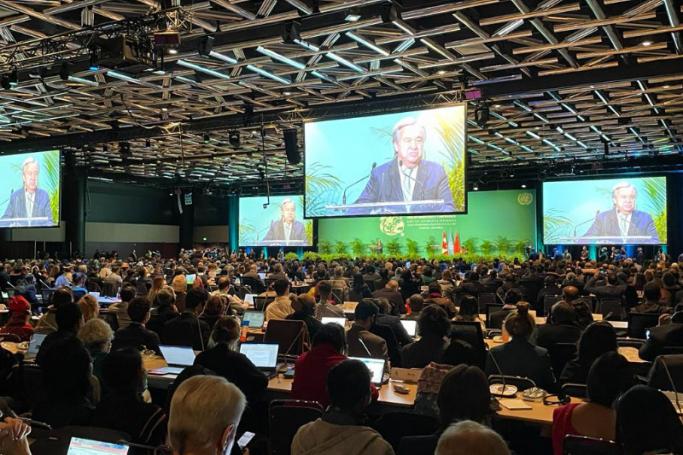A delegation of indigenous leaders from Myanmar will be in Montreal, Canada this week for the 15th Conference of the Parties (COP-15) to the UN Convention on Biological Diversity, according to a press release from the All Burma Indigenous People’s Alliance.
Since the military coup on 1 February 2021, indigenous people, territories and biodiversity have come under intense pressure from military offensives, aerial attacks and rapid logging and mining operations, the press release dated 10 December says.
Since the Myanmar military coup, over 2,500 civilians have been killed, 16,000 have been arrested, and over one million people have been displaced by intensifying conflict. Over half of which have been in indigenous territories.
In a unique setting indigenous leaders held an event on 10 December, ahead of the conference, to tell the world about the atrocities taking place in their territories.
From Ukraine, to Yemen, to Burma, conflict, oppression and dictatorship are some of the world’s worst drivers of biodiversity loss and environmental destruction. In Burma, since the military coup, indigenous communities across the country have reported a rapid increase in mining and logging in their territories. Indigenous communities and environmental defenders also face lethal retribution if they challenge the plunder of their forests and biodiversity. Lessons from Burma and beyond are clear; without democratic governance and respect for Human Rights, protection of biodiversity is not possible.
Despite the insurmountable hardships and challenges that indigenous peoples in Burma face, they have made huge contributions towards biodiversity protection, and as a result Burma continues to hold some of South East Asia’s largest contiguous rainforests that support a range of vulnerable and endangered species, including a considerable population of tigers.
Initiatives such as the Salween Peace Park, a 5,400 square kilometre indigenous protected forest
landscape in conflict stricken northern Karen State, demonstrate the significance of indigenous knowledge, ingenuity and practice in protecting globally threatened biodiversity. Similar examples of indigenous protected territories can be seen across the country, from the southern coastal region of Tanintharyi Region to the far northwest Naga Hills.
Over 50 per cent of the world’s surface is controlled under dictatorships and authoritarian regimes, many with a track record of environmental exploitation and plunder. Within this context, Indigenous leaders from Burma ask – whose biodiversity action plan? Where nation-states are environmental destroyers, the CBD and other international mechanisms must recognize the considerable efforts that Indigenous communities have made, supporting their efforts rather than the plans of central governments.












